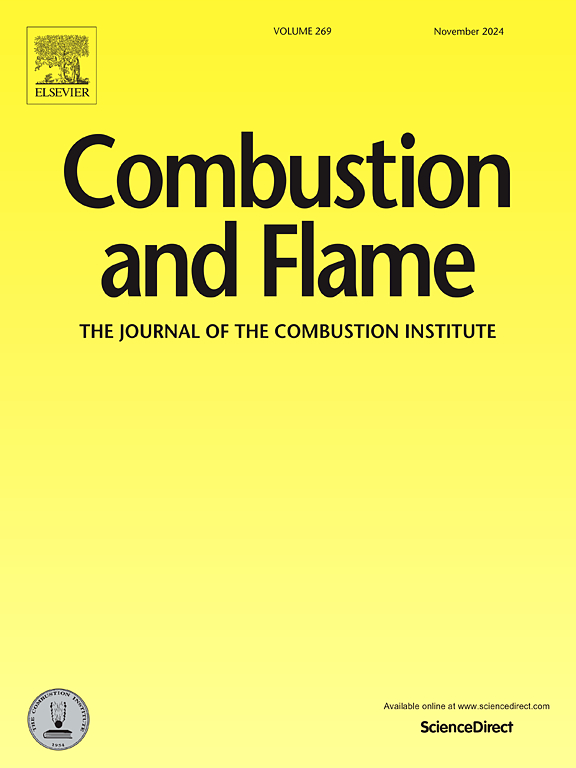Development and validation of a framework to predict the linear stability of transverse thermoacoustic modes of a reheat combustor
IF 5.8
2区 工程技术
Q2 ENERGY & FUELS
引用次数: 0
Abstract
To achieve fully carbon-neutral, fuel-flexible and on-demand grid power delivery, gas turbines featuring constant pressure sequential combustion architecture show great potential. A sequential combustor is comprised of two axially-staged combustion chambers with the first stage typically being a swirl-stabilised propagating flame. Post first stage combustion, the exhaust stream is first diluted with air and later enriched with additional fuel in the second stage resulting in a vitiated product mixture at high temperatures leading to auto-ignition. Thermoacoustically-stable combustion stages are critical to ensure low emissions, high reliability and ensure mechanical integrity. The second stage firing under auto-ignition conditions can be subject to transversal instabilities. This article presents a finite element coupled method to model the thermoacoustic behaviour of a second stage reheat flame in an efficient, cost-effective approach. To do so, prior techniques to model the response of autoignition-stabilised flames to longitudinal acoustic perturbations is leveraged to quantify the auto-ignition flame’s heat release rate response to transverse acoustic waves. Subsequently, the framework is used to compute the stability of transverse eigenmodes for an atmospheric reheat combustor. Validation is performed by comparison to experimentally obtained pressure sensor measurements and chemiluminescence imaging of the flame. It is observed that the framework can correctly predict the combustor’s unstable first transverse mode and also capture the dynamic flame response qualitatively. Consequently, the framework presented in this work can be leveraged to get reliable and time-efficient stability estimates of the transverse thermoacoustic modes in experimental reheat burners.
求助全文
约1分钟内获得全文
求助全文
来源期刊

Combustion and Flame
工程技术-工程:化工
CiteScore
9.50
自引率
20.50%
发文量
631
审稿时长
3.8 months
期刊介绍:
The mission of the journal is to publish high quality work from experimental, theoretical, and computational investigations on the fundamentals of combustion phenomena and closely allied matters. While submissions in all pertinent areas are welcomed, past and recent focus of the journal has been on:
Development and validation of reaction kinetics, reduction of reaction mechanisms and modeling of combustion systems, including:
Conventional, alternative and surrogate fuels;
Pollutants;
Particulate and aerosol formation and abatement;
Heterogeneous processes.
Experimental, theoretical, and computational studies of laminar and turbulent combustion phenomena, including:
Premixed and non-premixed flames;
Ignition and extinction phenomena;
Flame propagation;
Flame structure;
Instabilities and swirl;
Flame spread;
Multi-phase reactants.
Advances in diagnostic and computational methods in combustion, including:
Measurement and simulation of scalar and vector properties;
Novel techniques;
State-of-the art applications.
Fundamental investigations of combustion technologies and systems, including:
Internal combustion engines;
Gas turbines;
Small- and large-scale stationary combustion and power generation;
Catalytic combustion;
Combustion synthesis;
Combustion under extreme conditions;
New concepts.
 求助内容:
求助内容: 应助结果提醒方式:
应助结果提醒方式:


